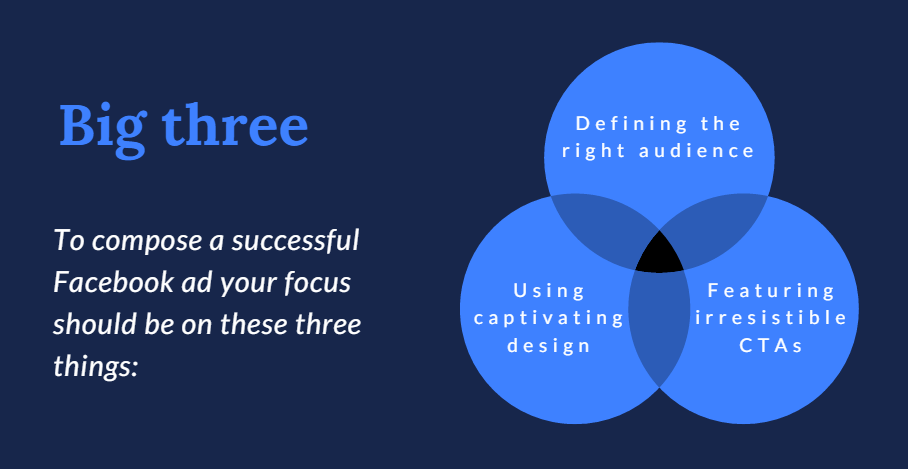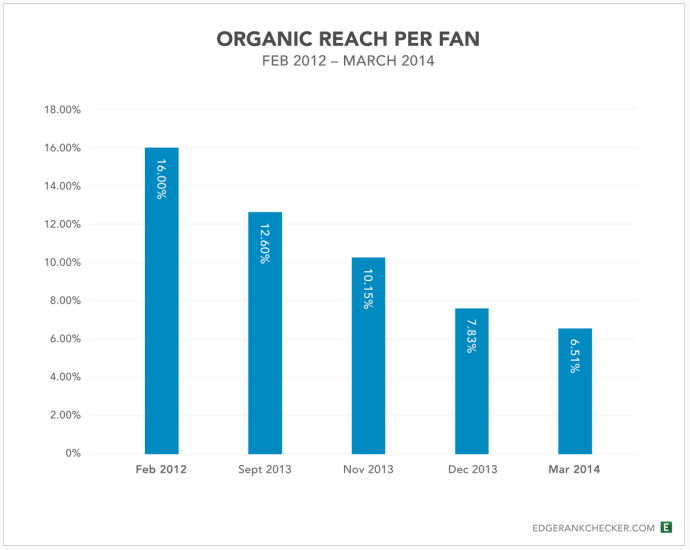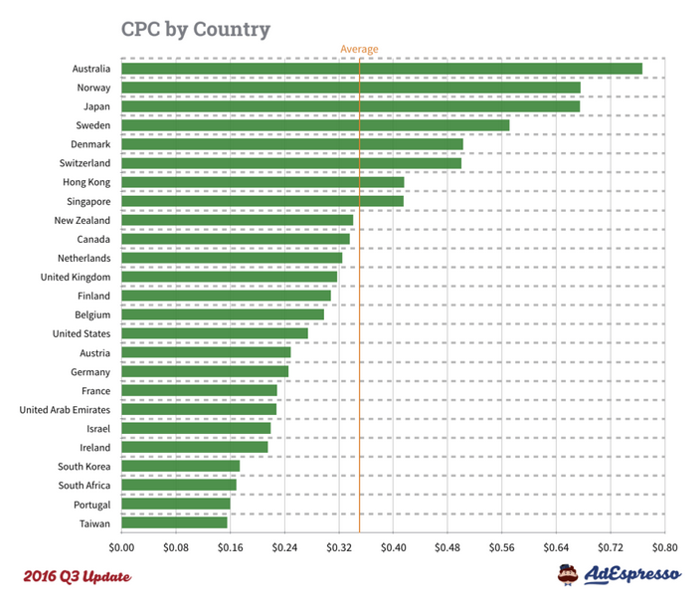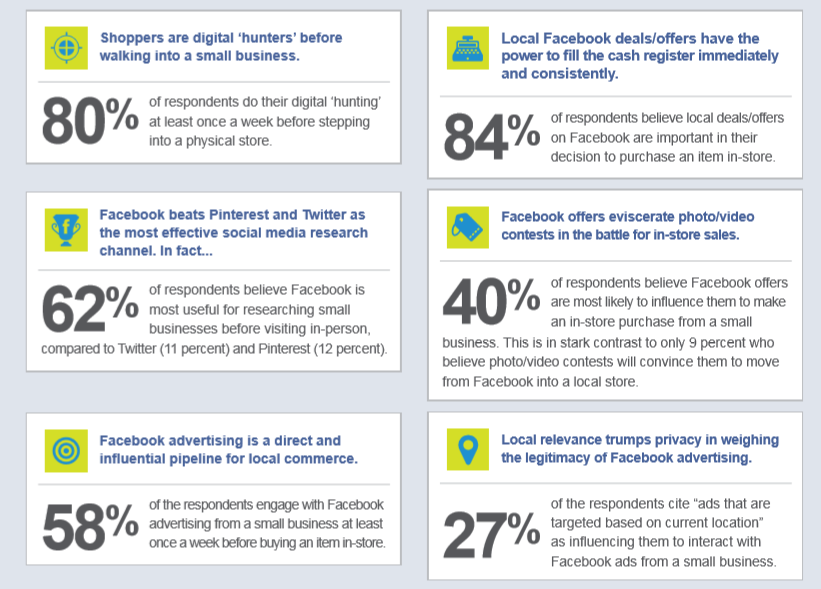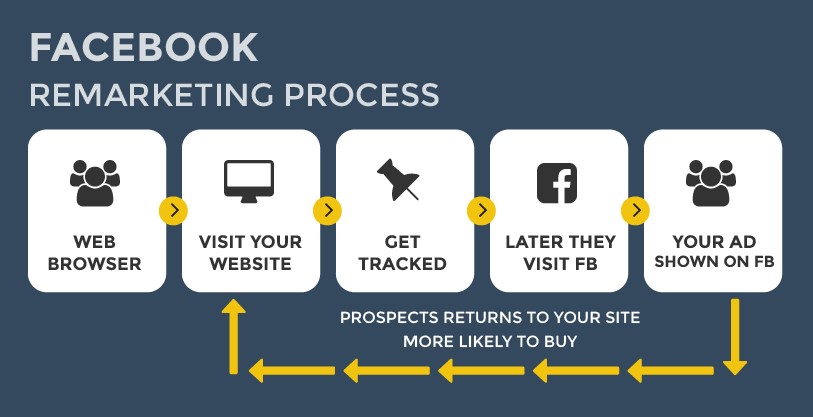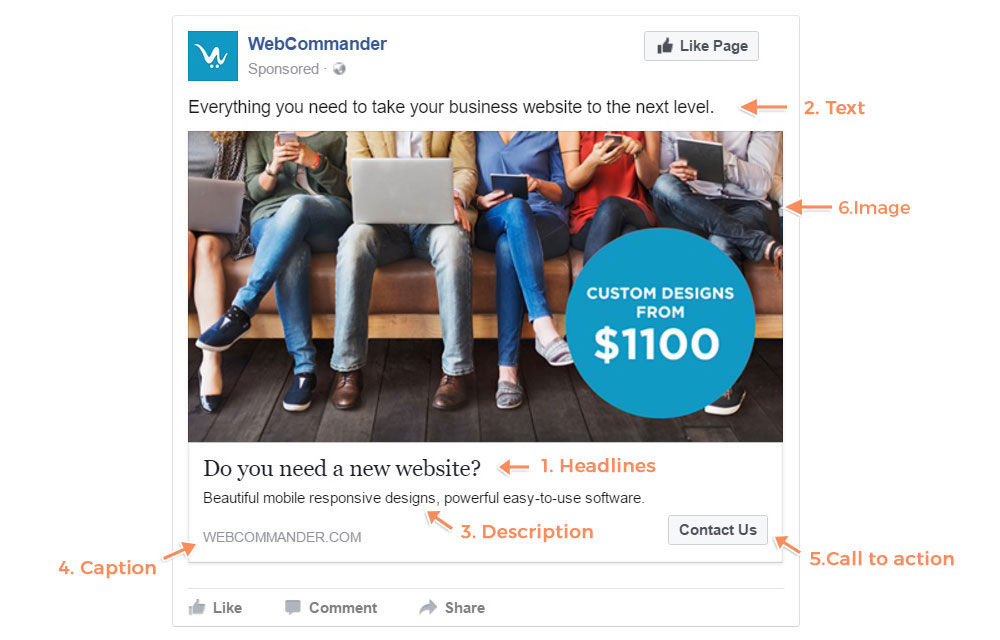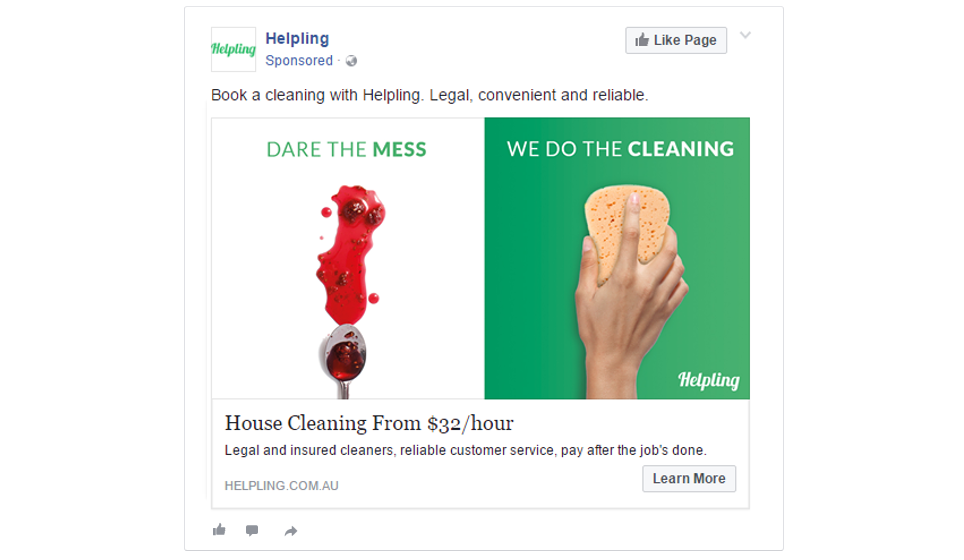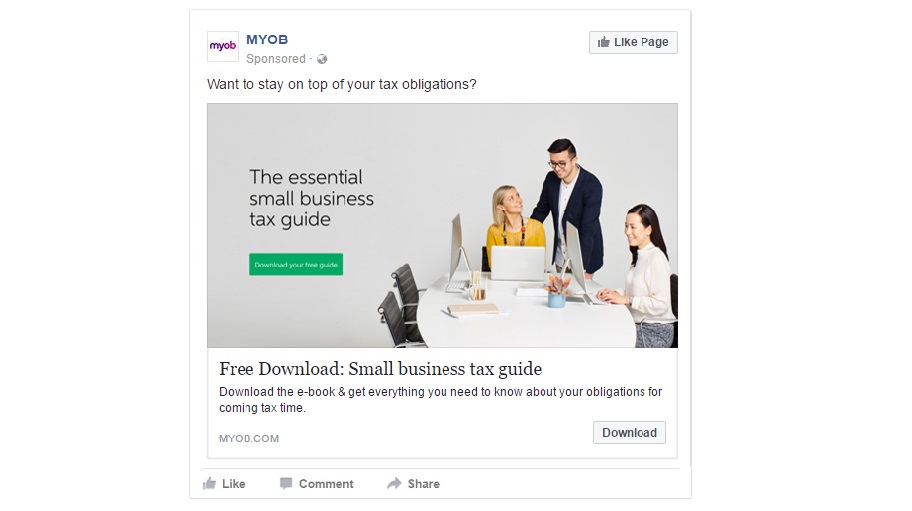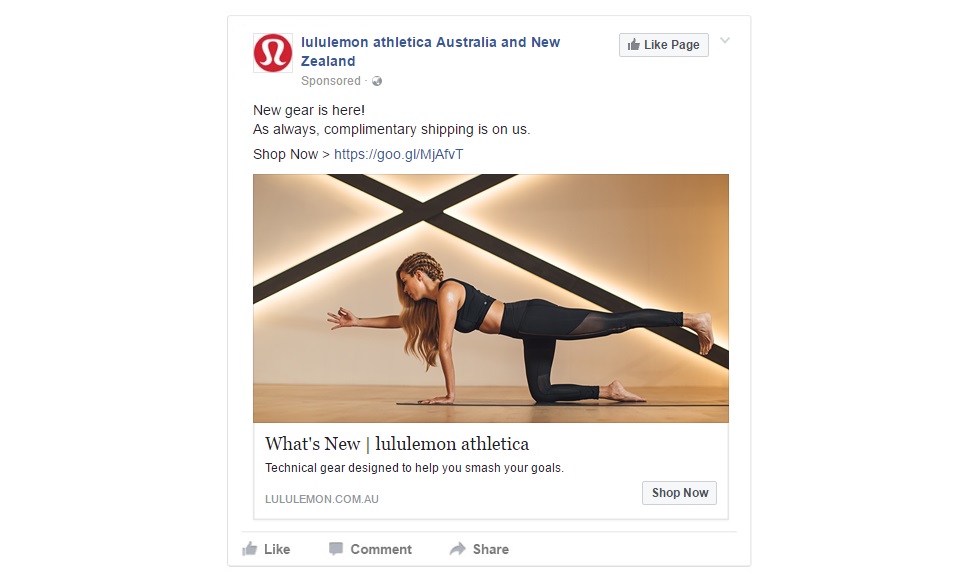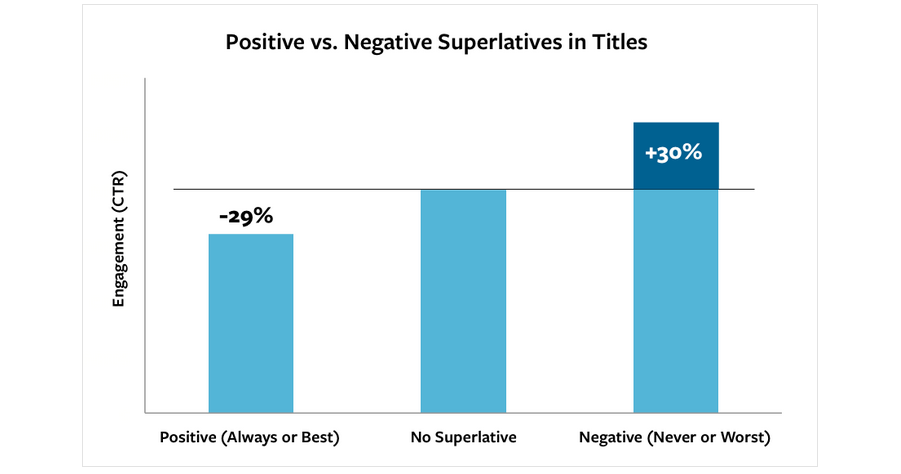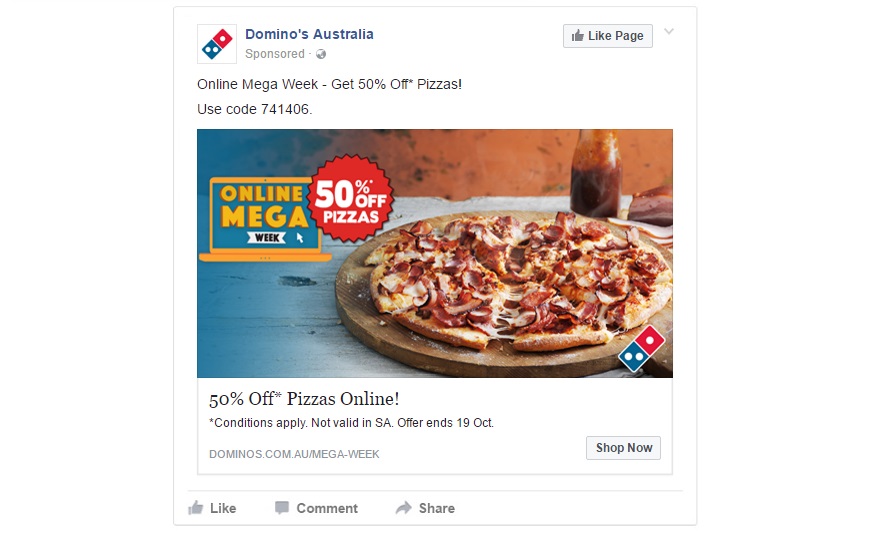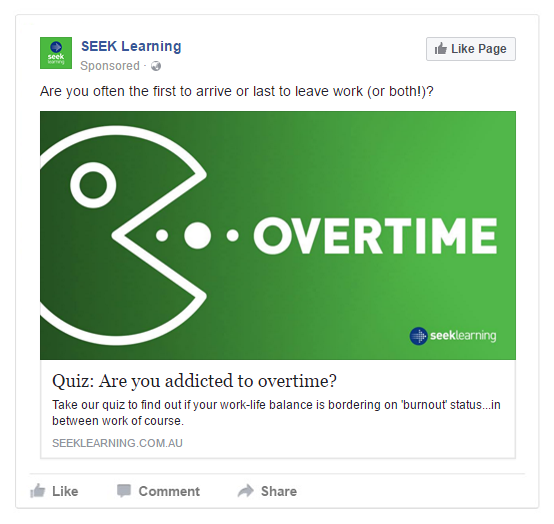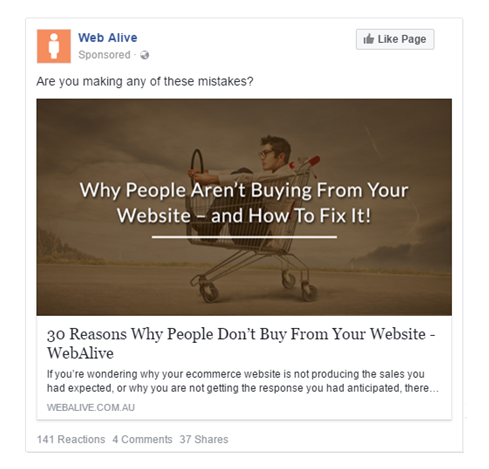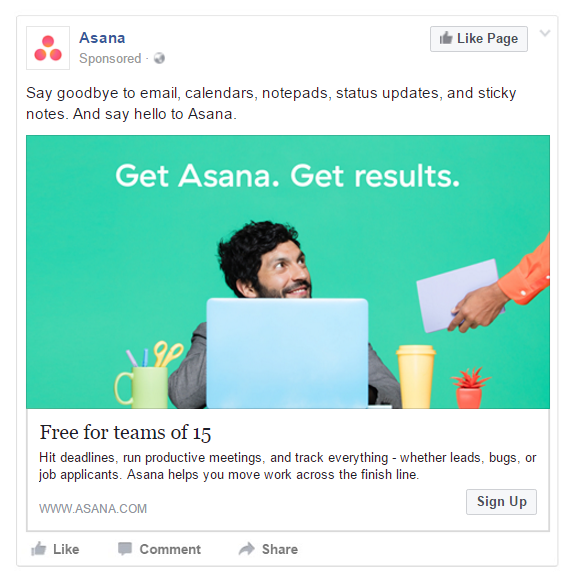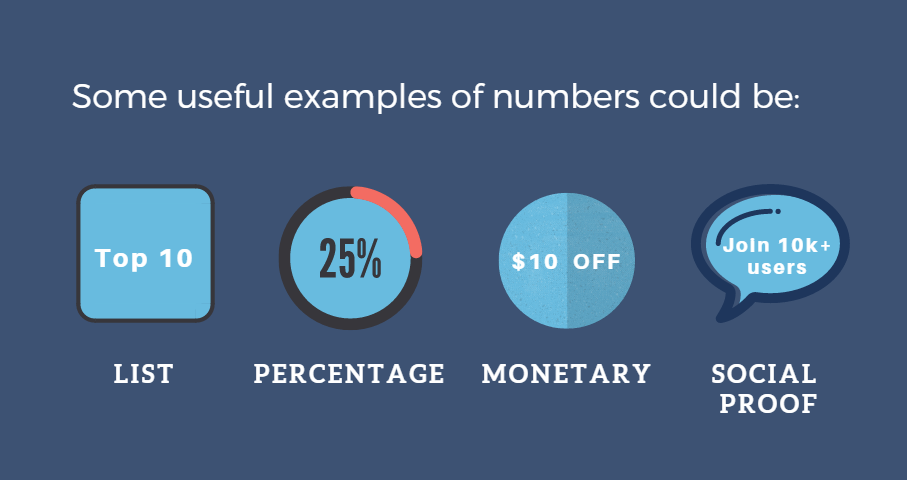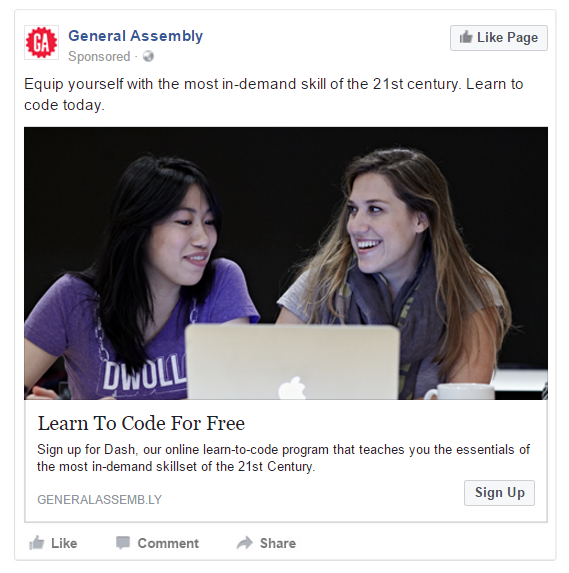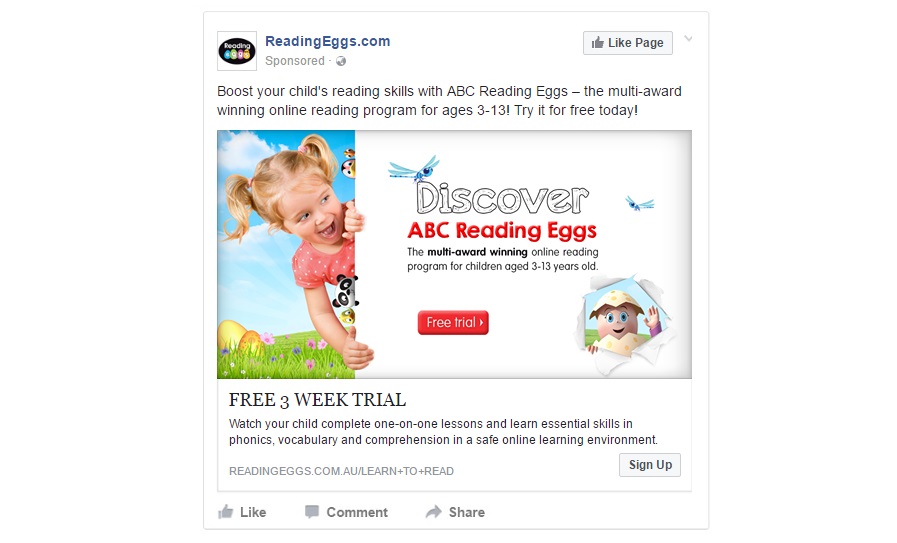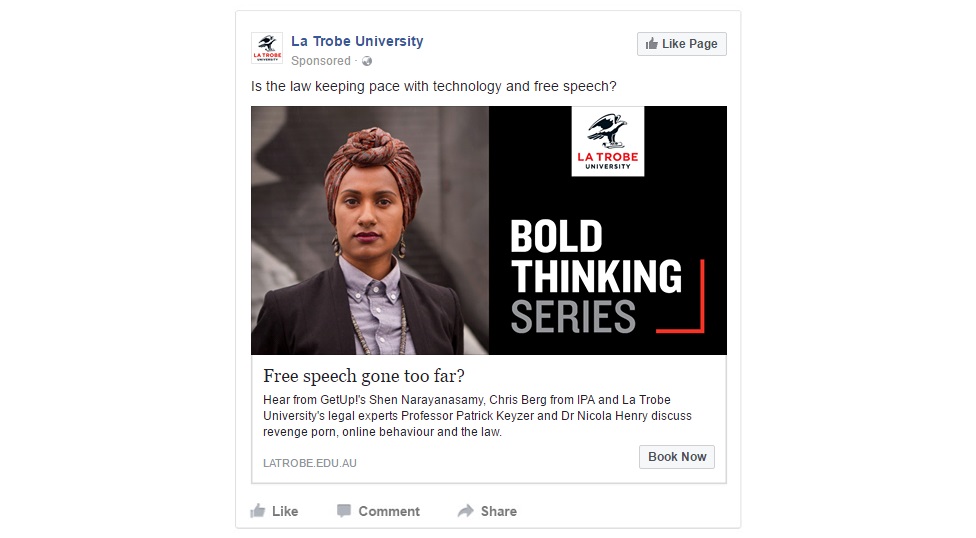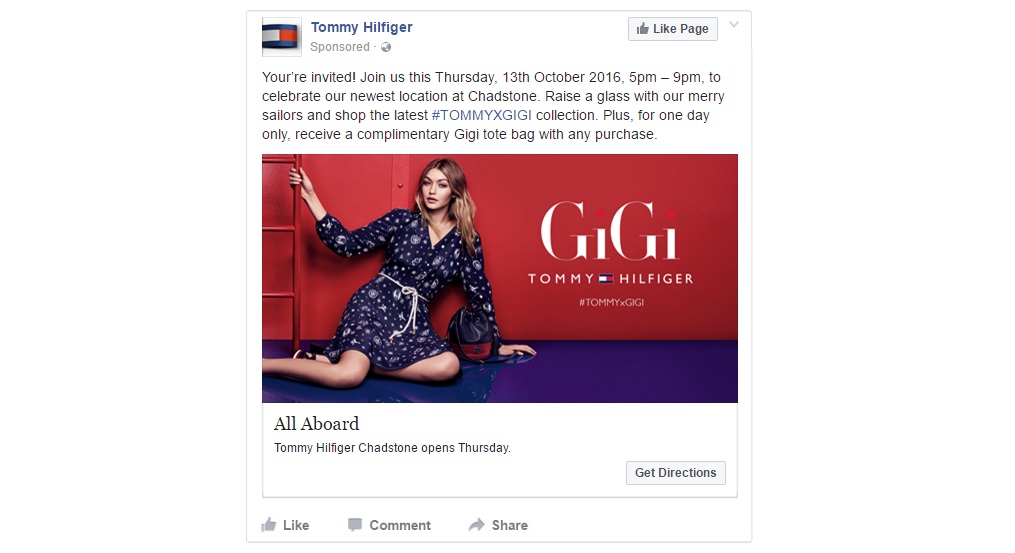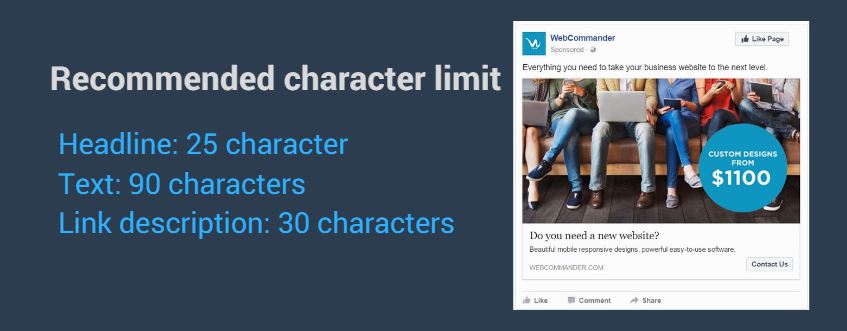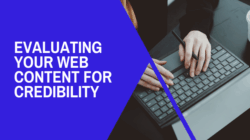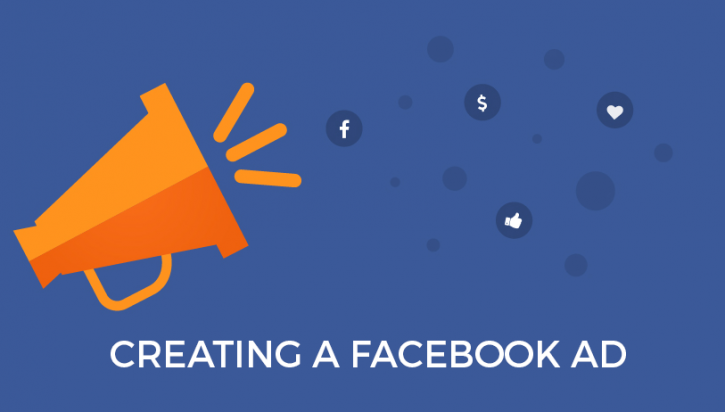
How to Create Facebook Ad Content That Get Results
Facebook has become more than just a social media network; it is also one of the world’s biggest advertising platform.
As of 2017, there are 2.13 billion active Facebook users all over the world, a number that attracts around 6 million advertisers to promote themselves through Facebook. From small local businesses to big multinational brands, everyone is using Facebook to advertise their products and services.
If you‘re planning to run a Facebook ad campaign, you’re likely going to face intense competition from other businesses in your field that is after the same customer base.
Despite the competitive nature of Facebook’s ad platform, there are numerous advantages and benefits that come with advertising in this space.
Advertising on a thriving social media platform simply cannot be compared to advertising in traditional media or general websites. Apart from offering great products and services that provide real value, Facebook ads must be very carefully crafted to grab the viewers’ attention.
This leads us to the topic of creating the perfect textual and visual content for Facebook ads that convert.
Table of contents
- Criteria for creating a successful Facebook ad
- Why is Facebook advertising important?
- Structure of a typical Facebook ad
- Creating an effective headline
- Writing text for your Facebook ad
- Writing effective description
- Caption
- Call to action
- Choosing the perfect image
- Common mistakes to avoid
- Ending remarks
Three criteria for creating a successful Facebook ad
1. Defining the right audience
Facebook is unique from other ad platforms in its ability to narrow down the target group of an ad campaign with the use of various parameters. As a social platform, it has more data about each user’s preference and therefore can help businesses pinpoint their target groups very easily.
This creates both opportunities and problems for advertisers, as many simply don’t know how to define the right audience.
2. Using captivating design
Facebook is actually a visual platform, so the design of your ads matters a great deal. The beautiful imagery alone won’t cut the cheese, though; you need to keep the perfect balance between aesthetics and effectiveness that feels engaging and grabs your potential customers’ attention.
3. Featuring irresistible CTAs
The text of your ad must be compelling and interesting to your viewers. It can be quite difficult to compose effective headlines and descriptions given the limited space and character limits, but there are some key guidelines that can help you write effective Call to Actions for Facebook ads.
In this article, we focus on the textual and visual aspects of a Facebook ad. We break down successful ad design practices into simple actionable steps, which can help you create great Facebook ads with ease.
But first, let’s have a look at why the Facebook ads have become so important for every business today.
Why is Facebook advertising important?
Your business can reach a huge audience
The 1.86 billion people on Facebook spend around 50 minutes per day on the social media website, and these numbers are only increasing.
Every minute, Facebook users interact with 4.1 million posts. It’s not surprising that there was a 50% increase in Facebook ad impressions in the first quarter of 2016. No matter who your potential customers are, Facebook can help your business connect with them.
You can create targeted ads
Being a social media platform, Facebook has a lot of information about its users, which presents a great opportunity for businesses to target audience based on people’s location, age, interests, behaviours and many other criteria.
There are numerous different of ways to optimise your Facebook ads, which gives you great power to advertise only to those potential customers that really matter.
Facebook ads are cheaper
Compared to other options, Facebook ads are really reasonably priced. Organic ads (i.e. posts from your own business page) are obviously free, so building a fan base can mean you are able to advertise your business to them free of charge.
That said, over the last few years, the organic reach of Facebook posts has sharply decreased.
Be that as it may, there are more than 40 million active small business pages on Facebook and methods you can adopt to increase the organic reach of your page.
However, the decline in organic reach has led to a greater focus on paid ads, which are very affordable. In the third quarter of 2016, the average cost per click (CPC) of Facebook ads was $0.27 and the cost for 1000 impression (CPM) was $7.19 (in the US). The CPC was $0.75 in Australia.
The actual cost of your ad campaign can vary, but the overall rate is quite low compared to other online ad services such as Google AdWords.
Facebook ads greatly influence purchasing decisions
A study by GO Digital showed that about 80% of shoppers browse products via Facebook at least once a week before visiting a physical store.
Local deals (via Facebook) are substantially important for 84% people and 62% of the participants rated Facebook as a more effective platform for product research than Pinterest and Twitter.
A further 58% engage with Facebook ads that eventually influences them to purchase products at least once a week.
The numbers certainly demonstrate how effective Facebook marketing can be.
You can remarket to increase conversions
Facebook’s remarketing capabilities are very handy and provide a means of converting one-time visitors. People often visit your website and leave email addresses; you can upload this email data from your CRM to Facebook and Facebook will show your ads to these people.
Facebook pixel can deliver ads specifically to people who visit your website, reminding them of the products they previously viewed on your website. These remarketing techniques have proven to be very effective in increasing conversion rates for businesses.
Structure of a typical Facebook ad
A typical Facebook Ad has 6 parts, which are:
1. Headline: The headline is the title of your Facebook Ad. It can have 250 characters.
2. Text: This should be a short description of the product or site that you are advertising.
3. Description: A longer description that appears in the news feed (but not in the right column ads). The maximum number of characters is 250.
4. Caption: The caption is generally the URL of your domain.
5. Call to action: There is 10 pre-defined call to action buttons to choose from, however, you can choose to not have one. The call to action button is placed at the lower right corner of the ad.
6. Image: A relevant image that grabs the viewers’ attention.
Next, we’ll discuss how you can effectively create, write and choose each of these elements to put together a successful Facebook ad.
Creating an effective headline
When someone sees your Facebook ad, the first thing they notice is the image. The first (and sometimes the only) thing they read is the headline.
The headline of your Facebook ad is arguably more important than anything else. You can grab anyone’s attention with an intriguing image or video, but a compelling headline is often what it takes to make them click.
Coming up with an effective headline isn’t easy; it needs to be interesting, memorable and to the point. There’s no default format that works for every product and it really depends on the kind of business, products and the brand image you have adopted. Tone also varies depending on your target group.
That said, there are some general guidelines and tips that you can follow for writing perfect headlines:
Keep it short
The average length of the most popular Facebook headlines is five words. Headlines should fall between 25-40 characters in length to maximise engagement. However, Facebook’s own recommendation is to keep your headline within 25 characters.
Short headlines are easy to read and can be taken in quickly as a potential customer is scrolling down their News Feed.
Make it clear
While it is important to keep your headline short, it must also be very clear in its message. The headline should clearly describe what your advertisement is about.
Clear language cuts through the clutter and allows your customers to comprehend the matter quickly, encouraging interested users to click through and learn more about the product or service.
Make it interesting
Being clear and concise is important, but rather than just stating what your business is about, your headline should be interesting. An interesting headline compels your potential customers to read the ad description and click on the call to action button.
Use the power words
Your choice of words has a profound impact on the effectiveness of your headlines. Here are some research-backed word choice tips that will help you create better headlines:
- According to a study by Moz/Conductor, using superlatives like “best” usually improves the click-through rate. But using too many of them, like “best ever” is not preferable. Another research by Outbrain shows that it’s better to use negative superlatives like “never” or “worst” than positive superlatives like “always” or “best”.
- In 2015, AdEspresso analysed 37,259 Facebook ads and found that the most popular words were: You, Free, Now and New. Surely these words work very well in headlines.
- It’s worth mentioning again that the word “you” is extremely effective in advertisements. According to Social Influence, if your headline asks a question containing the word “you”, it will get 175% more clicks.
Include a number in the headline
Using numbers in the headline increases the click-through rate by 36%. Interestingly, headlines with odd numbers will get 20% more clicks than the ones with even numbers. Research has shown that people consider headlines with numbers to be more trustworthy.
Offers with numbers, like 20% Off, Subscription for $1 per week etc. encourage the viewers to check out the product.
Pose a question
A headline that asks a question tends to attract people’s attention, creating a longing to find out the answer when used correctly. The statistics indicate that these kinds of headlines generate 150% more clicks than headlines making a statement.
Look for a question your target audience might find intriguing, then use that question in a way so that they can relate the answer to your product.
Mention how your product will benefit your potential customers
Headlines like “Learn to Code”, “Make Work Better” or “Build what’s next” work because these headlines don’t describe the features but the benefits. Try to highlight how your products are going to solve potential clients’ problems and make their lives better.
Make it intriguing
A headline that stimulates viewers’ curiosity can help entice them to engage. It’s perfectly acceptable to encourage a look with the promise or more information, provided your website or Facebook page satisfy this curiosity.
But be careful not to turn your ads into clickbait, which is frowned upon by the online community and Facebook alike.
Make it imperative or create a sense of urgency
Imperative statements can also make good headlines, where strong verbs such as Get, Make, Buy, Build or Visit are used. Headlines like these command action and inspire interest.
Another way to get potential customers’ interest is to create a sense of urgency. The feeling of scarcity and fear of missing out (FOMO) will always persuade potential customers. For this reason, headlines that offer sales or discounts will increase the click-through rate.
Writing great text for your Facebook ad
Simply put, the text of your Facebook ad should tell people about the product or service you are advertising. Facebook recommends a text length of 90 characters, but according to AdEspresso, the median text length is 15 words.
People won’t read large slabs of text, so there’s no point in writing a long descriptive piece. Ideally, your text should be very short, snappy and clear allowing the audience to instantly comprehend what the ad is promoting.
Here are a few more tips for writing a great text description:
- Use a tone of voice that is consistent with your business. For example, text for a sportswear seller should not be similar to a shop that sells formal clothing.
- Stick to what is important. Facebook users have a very short attention span. If you can’t convey the important information in a few words they won’t bother clicking your ad.
- Write from the viewpoint of your customers. Customers don’t want to hear how great your business is, they want to know how the product is going to benefit them.
- If you’re offering a discount or special offer, don’t forget to mention that in your text. Words like Now, Limited time, Today etc. encourage readers to take action. You can also ask questions to engage your customers.
- Just like the headlines, using numbers in the text works very well to grab customers’ attention. In most cases, advertisers use rounded numbers.
- Phrases like “Get x% discount by ordering before y date”, “Limited time offer”, “Buy x Get y Free” etc. generally work quite well. You should try to provide high-value offers to your customers to make your ads more effective.
- Some advertisers use social proof to show their audience that a number of people are already using their product. Though it’s common to use rounded numbers for social proof, you should use the actual user count rather than a rounded number. This will help you stand out from other ads. You can also use user testimonials or customer reviews as your social proof.
Writing effective description
Almost all of the tips that we have mentioned so far apply for writing effective descriptions too. Note that if your ad is being displayed in the right column, the viewers won’t see this part of the ad.
The AdEspresso study revealed that the median length of description is 17 words. The description should be concise yet provide enough information to urge potential customers to click through the ad.
Caption
The best thing to include in the caption is your domain. The address should be in this format: WWW.YOURSITE.COM. Don’t use WWW.YOURSITE.COM/LANDINGPAGE, because it doesn’t look neat. Many ads also include their tagline along with the URL.
Example: YOURSITE.COM | TAGLINE
Call to action
A Call to action (CTA) button makes it very easy for a user to click through to your site, or to learn more about your product by a single click. It is an optional part of a Facebook ad. But we highly recommend including it, no matter what type of ad you have.
Facebook gives you some predefined CTA buttons to choose from. The most popular ones are: Learn More (34.2%), Shop Now (30.7%) and Sign Up (22.6%). But there is no reason to confine yourself to these three; always use a CTA button that is specific to your products or services.
Choosing the perfect image
The recommended image size for Facebook ads is 1200 x 628 pixels. The image ratio should be 1.9:1. Always use a high-quality image that is bright, eye-catching and of course relevant. The image plays a key part in the success of an ad, so make sure it looks very professional and eye-catching.
Here are some things to consider before you choose the image for your ad:
Show faces in your ads
Photos are powerful because they are a great way to communicate your message. As humans, we are always attracted to the faces of others.
Eye contact is another important point to consider as it helps to build trust, so if your image includes a person looking directly into the camera, you’re more likely to grab people’s attention.
Use images that show emotion
Facial expressions are a universal way to express emotion, making them something you need to consider in your image selection. For Facebook ads, the best strategy is to use smiling faces and positive emotions. People will subconsciously relate the positive emotions shown in the ad to the benefits of your product.
However, sometimes negative emotions also work.
Consider the psychology of colour
We naturally associate different colours with different emotional states. The colour red is often used in ads to make them stand out. Brighter colours are popular with younger people, while darker and cooler colours like blue and purple appeal more to adults. The colour green goes very well with natural products.
If your business has a brand identity, it’s a good idea to use a steady set of colours across your site and Facebook ads so that people get a consistent brand experience.
Try to avoid stock photos
It’s not really possible for everyone to avoid using stock photos altogether, but if you can refrain from using generic looking images, it’s a good idea. You don’t always need to use real images in Facebook ads. Using colourful graphical images often works well.
Use location-specific image
Advertisers often tend to ignore the fact that you can run location-specific versions of your ads on Facebook.
For example, when an audience views your ad in Melbourne, your ad can show a related image (like your company’s Melbourne showroom). This technique is very effective to gain click-through.
Common mistakes to avoid
So now you know how to design a great Facebook ad that will bring more conversions to your business. It’s also worth pointing out some common mistakes that even experienced Facebook Ad users make quite often.
In 2012, General Motors claimed that Facebook ads don’t work and stopped their ad campaigns on the platform, only to realise their mistakes a year later.
So here are the most common mistakes that companies or small business make while creating Facebook ads:
Targeting the wrong audience
Even though Facebook provides very sophisticated ad targeting options, most companies don’t utilise that at all. There is a common misconception that targeting a wider audience will bring you more customers. While this might be true for advertising in traditional media, it’s not the case when it comes to Facebook ads.
Not giving enough importance to headlines
Honestly speaking, the headline is the single most important thing of an ad (maybe along with the image). But it’s unbelievable how most of the ads don’t get their headlines right. Many ads use overly clever headlines that make the whole ad obscure.
Exceeding the recommended word limit
While the max limit of characters for headline, text or link description is more than you can ask for, Facebook clearly recommends adhering to following recommended lengths:
Ignoring these may cause your ad headline or text to be broken and displayed only partially across different devices.
Omitting the call to action button
The CTA button is optional, but there is absolutely no reason why you should not include it in your ad. Further, your text and image should have a call to action vibe to it.
Customers will not be encouraged to figure out how awesome your products are if you can’t take the first step of motivating them to do so.
Ignoring the remarketing options provided by Facebook
Remarketing is probably the most powerful advertising technique provided by Facebook. Using Facebook pixel you can track conversions across your websites and there are too many other benefits to be listed here. Yet, many businesses apparently don’t use this amazing piece of code.
Inconsistent landing page
When potential customers click on a Facebook ad that offers a 20% discount on a certain product, they expect to reach a page that shows that order related information. But in many cases, the customer is sent directly to the home page or a page which is not coherent with your ads visual style.
All of these are examples of poor UX.
Not interacting with customers
People can comment on your Facebook ads, which is a great way to get qualitative feedback on your products and services. Responding to comments is important from a brand building perspective, yet many businesses tend to ignore this.
Another common mistake is to give harsh replies towards negative comments. This does nothing but to degrade your brand value and drive away valuable future customers.
Ending remarks
Creating a successful Facebook ad may require a lot of experimentation in the beginning. One great way to see what works and what doesn’t is to create multiple versions of the ad and analyse which ones are really working.
Facebook provides lots of options and tools to make your ad campaign effective. By keeping the guidelines we provided in this article in your mind and avoiding the mistakes we mentioned, you can be successful in creating effective Facebook ads that bring desired conversions.
You read a lot. We like that
Want to take your online business to the next level? Get the tips and insights that matter.
